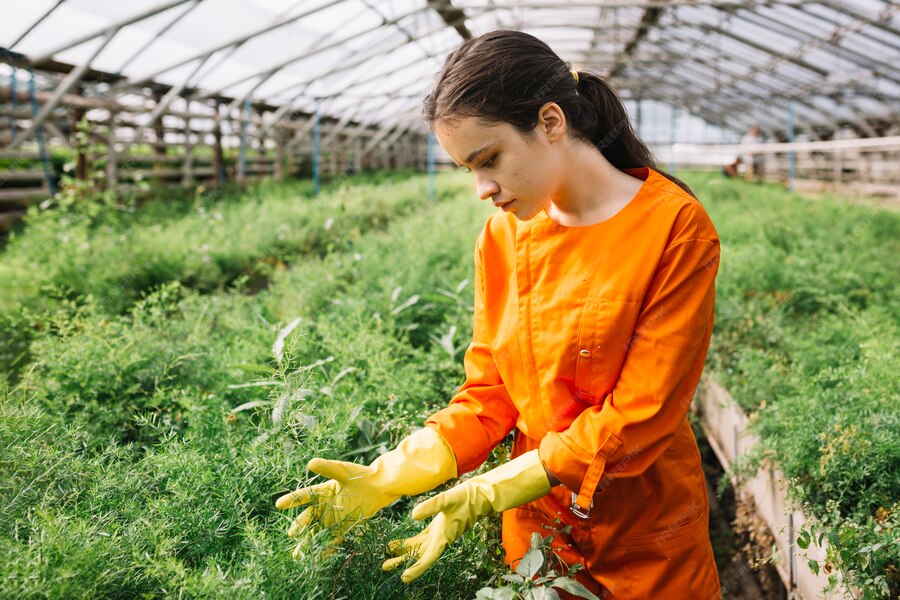We all have a responsibility to act as stewards of the natural world, particularly when the work we do has an outsized impact on the environment around us. Agriculture, in particular, can do a great deal of harm to the environment if farmers don’t keep conservation in mind.
Chemicals, such as fertilizers and pesticides, can enter nearby watersheds as a result of runoff and cause both direct and indirect harm to the local wildlife. This is a particular problem when farms are near major bodies of water, such as rivers, as they can spread the pollutants far and wide, impacting river wildlife and harming other plants and animals that depend on the river for their water supply. This can also include human populations near rivers, as runoff negatively affects drinking water quality.
In the following article, we’ll discuss the best practices farmers can adopt to reduce runoff, preserve natural habitats, and maintain water quality in their area. In this way, they can do their part to support biodiversity and ecosystem health near waterways.
1. Responsible Fertilizer Use
Table of Contents
The first, and possibly the most important, method for reducing the environmental impact of agriculture is to minimize the use of fertilizer chemicals on the farm. These chemicals are often necessary for crops to grow and thrive, providing them with vital nutrients to encourage a healthy output. However, they tend to be overused on modern farms, and the excess often ends up in the local watersheds after rainfall.
When fertilizers enter a river or other body of water, they can cause algae and phytoplankton to grow out of control. As a result, these aquatic plant species will choke out other life in the river, eventually depleting the oxygen supply that local fish and other animals depend on.
Modern conservation practices aim to reduce the use of these chemicals by applying them more responsibly. For example, farmers can greatly reduce their reliance on fertilizers by implementing a crop rotation schedule. By periodically switching out the type of crop that is grown in a specific plot, key nutrients can be replenished so that artificial nutrition through fertilization is less likely to be needed.
2. Reducing Reliance on Pesticides
Pesticides are necessary for eliminating insects that would otherwise destroy crops, but they are indiscriminate and can cause a great deal of harm to beneficial species as well. In addition, pesticides and similar toxins can work their way up the food chain, first accumulating in insect species, then fish, and finally in the larger predators that depend on fish as their food.
Farmers should work to scale back on the use of pesticides through the practice of Integrated Pest Management (IPM), which is a series of strategies that focus on both prevention and control. For example, physical barriers may be put in place to block pest species from entering an area, or farmers may encourage the presence of beneficial native predator species, such as wasps or ladybugs, which can help to cull pest populations naturally.
3. Building Buffer Zones
Even farms that have worked to reduce their dependence on fertilizers and pesticides will still have an environmental impact as a result of runoff. When rainfall occurs, the water will flow back into rivers, lakes, and other bodies of water, carrying with it any pollutants it picks up along the way. When rainfall hits a farm, it collects any residual fertilizers, pesticides, and loose soil and deposits them into the local watersheds.
One of the practices farmers use to maintain water quality and protect river wildlife is the use of buffer zones. Buffer zones are rows of permanent vegetation (not cash crop species) that farmers plant surrounding agricultural plots. The buffer plants can be any hardy species, but it’s extra beneficial if they are native to the area. The presence of native plant life will provide a habitat for local wildlife, including pollinators and other beneficial insect species.
These buffer zones serve as a shield against runoff because they soak up excess water after a rainfall. They also absorb toxic chemicals before they can enter the river biosphere, and the roots of the buffer plants help anchor the soil in place, preventing excessive erosion from occurring.
4. Reducing Water Usage

Excessive water usage is another major cause of runoff on farms, which contributes to pollution in local waterways. Traditional irrigation methods tend to leave areas flooded, causing a steady flow of chemical and soil-laden water to run toward the nearest rivers. Farmers can mitigate the environmental impact of their farms by working to reduce overall water usage. This can be done through the careful implementation of several simple techniques.
Drip irrigation is a popular method for reducing water usage on farms. Instead of sprinklers, a tube is run directly along the root systems of crops, allowing them to be targeted directly with minimal water waste. Farmers can also use scheduling software to perfectly time irrigation for maximum impact, allowing them to achieve better results with less water.
5. Working With Conservation Organizations
Farmers who are truly committed to protecting river wildlife and supporting biodiversity in their areas also work closely with local conservation organizations with whom they can share knowledge and discover solutions that benefit everyone. Major farming organizations, such as the Washington State Potato Commission, have joined forces with local organizations to develop more sustainable agricultural practices. Working together, these organizations can tackle major problems in practical and effective ways to ensure continued productivity while still focusing on conservation.
All across the United States and the world, farmers act as shepherds for the natural world, implementing the latest techniques to promote a healthier environment, cleaner water, and greater access to critical resources for both humanity and wildlife.





No Comments